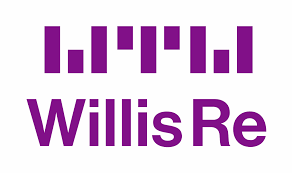Global reinsurance broker Willis Re has said that while reinsurance pricing continued to increase at the June and July mid-year renewal season, the market is approaching equilibrium, as it saw many reinsurers having to accept firm order terms below their initial quotes.
This reads across from the catastrophe bond market, where pricing remains higher than it had been a few years ago, but has softened quiet considerably over 2021 and resulted in spreads often coming in below guidance.
So with the global reinsurance market now seen to be approaching an equilibrium, the question is where next.
Will it remain stable, in terms of capacity and pricing? Or will continued increases in capacity and also insurance-linked securities (ILS) capacity mean that reinsurance returns to a softening state?
Despite reinsurers’ best efforts to maintain pricing momentum, Willis Re explained that a number of factors are reducing the pace of rate increases.
The broker cites good Q1 results for reinsurers, generally low catastrophe losses through recent months, rising underlying reinsured premium volumes, positive investment trends, and also the strong economic recovery from Covid-19-related economic pressures, as all factoring into this.
James Kent, Global CEO of Willis Re, commented, “The global reinsurance market is moving towards an equilibrium. Reinsurers, backed by resilient investors delivering an increasing capital base, are robust and well positioned to provide the long-term support their clients expect and need. These clients recognise the value of a stable and broad reinsurance marketplace, so have continued to grant rate increases in most instances.”
Capacity in reinsurance remains more than sufficient to meet demand, Willis Re said, but added that in the main reinsurers “resisted the temptation to compete for top-line revenue, so capacity for poorly performing classes was constrained.”
Willis Re cites flat or modestly rising rates for property renewals and a gentle upwards trend for casualty risks although perhaps with more variation in pricing and coverage terms.
At the same time, ceding commissions were seen as an exception, which Willis Re said “responded more directly to changes in the underlying rates and terms & conditions.”
The broker does also highlight “significant investment inflows” into the catastrophe bond market, which it says “have narrowed margins and encouraged new cat-bond cedants.”
Explaining that, by its metrics catastrophe bond issuance in the second quarter reached around $6 billion, more than all new issuance in 2019.
So, back to that question of where next for reinsurance rates, with January 2022 the next major renewal season?
Willis Re acknowledge we’re near the peak now, but feels this won’t herald a significant softening event straight after.
Kent explained, “We are approaching the top of a cycle which we believe is unlikely to precede a precipitous and damaging decline in rates. Instead, the market is likely to retain its discipline in order to maintain the balance it has achieved over the past couple of years especially with the full picture of losses from Covid and prior year liability lines still to emerge.”








































